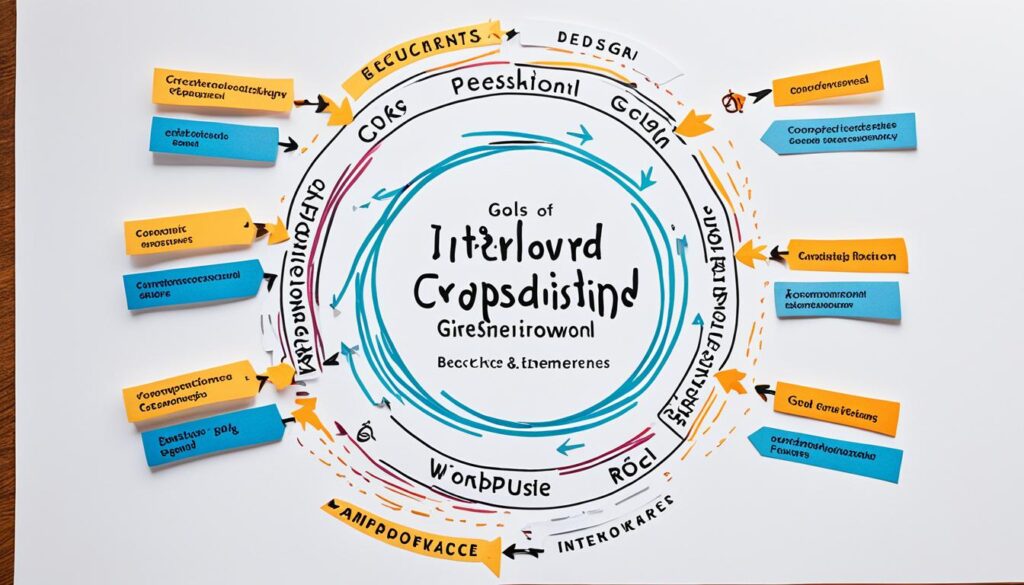Team dynamics play a crucial role in shaping the success of organizations. Understanding the theories and concepts behind team dynamics is essential for improving collaboration, communication, and overall performance within teams. In this article, we will explore various team dynamics theories, group behavior models, teamwork frameworks, and organizational psychology concepts that can help organizations build effective teams. By examining a team dynamics theories overview, we can identify the key elements that contribute to successful team interactions, such as trust, role clarity, and conflict resolution strategies. These theories offer valuable insights into how diverse perspectives can enhance creativity and problem-solving within a group. Ultimately, applying these principles will enable organizations to create a more cohesive and productive work environment, leading to improved outcomes and employee satisfaction.
Collaboration strategies and effective team communication are key to fostering positive team dynamics. By implementing leadership styles that align with group dynamics, organizations can create an environment that promotes trust, engagement, and productivity among team members. Additionally, team development methodologies and tools can be utilized to analyze and improve team performance.
Key Takeaways:
- Team dynamics theories and models provide insights into how individuals within a team interact and collaborate.
- Positive team dynamics contribute to employee engagement, collaboration, and productivity.
- Effective team communication and collaboration strategies are essential for building strong teams.
- Leadership styles should align with group dynamics to foster trust and engagement.
- Team development methodologies and performance analysis tools can help improve team dynamics and performance.
The 4 Characteristics of Successful Teams
Successful teams possess certain characteristics that contribute to their effectiveness and productivity. These team dynamics theories emphasize the importance of building positive team dynamics for achieving common goals and fostering a collaborative work environment.
1. Shared Sense of Purpose
A successful team is united by a shared sense of purpose and a clear understanding of their collective goals. This common purpose provides team members with a sense of direction and motivation, enabling them to work together towards a common objective. When team members are aligned in their purpose, it enhances their focus, collaboration, and decision-making.
2. Trust
Trust is a fundamental characteristic of successful teams. When team members trust one another, they are more likely to share ideas, take risks, and support each other’s work. Trust allows for open and honest communication, creating an environment where feedback is constructive and conflicts can be resolved effectively. Building trust within a team requires consistent actions, transparency, and accountability.
3. Mutual Respect
Mutual respect among team members is crucial for maintaining a positive team dynamic. Respecting each other’s expertise, opinions, and contributions fosters collaboration and encourages diverse perspectives. When team members feel respected, they are more likely to actively engage in discussions, value each other’s input, and create an inclusive work environment.
4. Effective Communication
Effective communication is essential for successful team dynamics. It enables team members to share information, provide feedback, and clarify expectations. Strong communication skills ensure that tasks are understood, goals are aligned, and potential issues are addressed promptly. When team members communicate effectively, it minimizes misunderstandings, enhances teamwork, and promotes a positive team culture.
By cultivating these characteristics, teams can create an environment where individuals feel motivated, engaged, and supported, leading to higher levels of performance and success.
Tuckman’s Stages of Group Development
Tuckman’s model describes four stages that teams progress through: forming, storming, norming, and performing. These stages represent the team’s journey from organizing to producing. Effective communication is crucial at each stage for successful progression.
In the forming stage, team members come together and begin to establish shared expectations, guidelines, and objectives.
The storming stage is characterized by conflict and challenge as team members start to assert their individual ideas and motivations. This stage is essential as it helps team members understand each other better, resolve differences, and establish a foundation for collaboration.
The norming stage is marked by cohesion and clarity of roles. Team members develop a sense of trust, cooperation, and shared understanding regarding their individual responsibilities. This stage is crucial for aligning the team’s goals and establishing efficient processes.
Finally, the performing stage is reached when teams have established synergy and efficient workflow. During this stage, team members work together effectively, communicate seamlessly, and achieve high levels of productivity and performance.
| Stage | Description |
|---|---|
| Forming | Team members come together and establish shared expectations and guidelines. |
| Storming | Conflict and challenge as team members assert their individual ideas and motivations. |
| Norming | Cohesion and clarity of roles. Team members develop trust and cooperation. |
| Performing | Synergy and efficient workflow as team members work together effectively. |
The DISC Theory for Conflict Management
The DISC theory is a widely recognized approach to understanding and managing conflict within teams. It categorizes personality traits into four distinct types: dominance, influence, steadiness, and compliance. Each trait brings unique characteristics, strengths, and weaknesses to team dynamics, making it essential to comprehend and leverage these differences to promote effective conflict resolution and collaboration.
1. Dominance: Individuals with dominance traits tend to be direct, assertive, and focused on problem-solving. They exhibit a strong desire for results and are often natural leaders within the team.
2. Influence: People with influence traits are persuasive, outgoing, and creative. They excel at building relationships, inspiring others, and generating innovative ideas.
3. Steadiness: Individuals with steadiness traits are reliable, patient, and team-oriented. They contribute to harmonious group dynamics and emphasize cooperation and support.
4. Compliance: People with compliance traits value accuracy, systems, and logical thinking. They thrive on structure, rules, and processes, offering a rational perspective to problem-solving.
By understanding the various personality traits within a team, leaders and team members can navigate conflicts more effectively. Recognizing the dominant traits of individuals who prefer direct action, the persuasive skills of those who influence, the reliability of the steady contributors, and the logical thinking of the compliant members can bring diverse perspectives to conflict management and decision-making processes.
“When dealing with conflict, it is crucial to acknowledge and appreciate the unique strengths that each personality trait brings to the table.”
By leveraging the DISC theory, teams can minimize misunderstandings, find common ground, and foster a collaborative environment where conflicts are resolved in a constructive and respectful manner. Successful conflict management ultimately leads to enhanced team dynamics, improved communication, and increased overall productivity.

Beckhard’s GRPI Model for Effective Teamwork
Beckhard’s GRPI model is a comprehensive framework that highlights the essential components of highly effective teamwork. By focusing on goals, roles, interpersonal relationships, and processes, this model provides a holistic approach to team dynamics and collaboration.
Clear and Aligned Goals
One of the key elements of the GRPI model is establishing clear and aligned goals within the team. When all team members understand the purpose and objectives of their work, it helps to create a shared vision and direction. Clear goals also enable the team to measure progress, evaluate success, and stay motivated.
Clearly Defined Roles
Another crucial aspect of effective teamwork is clearly defining the roles and responsibilities of each team member. When everyone knows their designated tasks and understands how their contributions fit into the larger picture, it enhances accountability and productivity. Clearly defined roles also prevent confusion, duplication of efforts, and potential conflicts.
Positive Interpersonal Relationships
Building positive interpersonal relationships among team members is vital for fostering trust, effective communication, and collaboration. When team members have good working relationships, they feel more comfortable sharing ideas, providing feedback, and supporting each other. Strong interpersonal relationships contribute to a positive team dynamic and create a supportive environment.
Defined Processes
A well-defined and efficient processes are essential for facilitating decision-making, problem-solving, and maintaining a smooth workflow. By establishing clear guidelines and procedures, teams can avoid unnecessary delays, confusion, and errors. Defined processes ensure that tasks are completed in a systematic manner, leading to improved efficiency and team performance.
| Key Components of Beckhard’s GRPI Model | Benefits |
|---|---|
| Clear and aligned goals | – Establishes a shared vision and direction – Enables measurement of progress and success |
| Clearly defined roles | – Enhances accountability and productivity – Prevents confusion and conflicts |
| Positive interpersonal relationships | – Fosters trust and effective communication – Creates a supportive team environment |
| Defined processes | – Facilitates decision-making and problem-solving – Improves efficiency and team performance |

By utilizing Beckhard’s GRPI model, teams can enhance their dynamics, overcome challenges, and achieve greater success. This framework emphasizes the importance of goals, roles, interpersonal relationships, and processes in building effective teamwork. Implementing the GRPI model can lead to improved collaboration, increased productivity, and a more positive work environment.
Thomas and Kilmann’s Model for Managing Team Conflict
When working in teams, conflicts are inevitable. Resolving conflicts effectively is crucial for maintaining positive team dynamics and achieving common goals. Thomas and Kilmann’s model provides valuable insights into different approaches for managing team conflict. This model presents five distinct conflict management styles: competing, accommodating, compromising, avoiding, and collaborating.
- Competing: This assertive and uncooperative style involves pursuing personal interests and disregarding the concerns of others. It can be useful when quick decision-making is necessary, but it may lead to strained relationships and reduced teamwork.
- Accommodating: This cooperative but unassertive style emphasizes maintaining harmony within the team. Individuals who adopt this approach prioritize keeping peace and satisfying the needs of others, sometimes at the expense of their own interests.
- Compromising: The compromising style balances assertiveness and cooperativeness. It involves finding middle ground and reaching a mutually acceptable solution through negotiation and concession. Compromising can lead to satisfactory outcomes, but it may not fully address the underlying issues.
- Avoiding: This unassertive and uncooperative style involves evading conflict and postponing its resolution. While avoidance may temporarily reduce tension, it does not address the underlying concerns and can hinder team progress in the long run.
- Collaborating: The collaborating style is both assertive and cooperative. It emphasizes open communication, active listening, and a genuine desire to find a win-win solution that satisfies the needs of all team members. Collaborating fosters creativity, trust, and strong relationships within the team.
To effectively manage team conflicts, it is essential to understand the nature of the conflict, the desired outcomes, and the dynamics of the team. By employing the most appropriate conflict management style, teams can navigate conflicts and foster a harmonious and productive working environment.
| Comparison of Conflict Management Styles | |
|---|---|
| Style | Characteristics |
| Competing | Highly assertive, uncooperative |
| Accommodating | Highly cooperative, unassertive |
| Compromising | Moderate assertiveness and cooperativeness |
| Avoiding | Unassertive, uncooperative |
| Collaborating | Highly assertive, cooperative |
The Five Dysfunctions of a Team by Lencioni
Lencioni’s model presents the Five Dysfunctions of a Team that can impede team effectiveness: lack of trust, fear of conflict, lack of commitment, avoidance of accountability, and inattention to results. These dysfunctions can hinder collaboration, productivity, and overall team performance. To address these challenges, teams need to focus on building trust, embracing healthy conflict, establishing a sense of commitment, fostering accountability, and keeping results at the forefront of their efforts.
“Trust is the foundation of any successful team. It is the confidence team members have in one another’s intentions and capabilities.”
Building Trust
Trust is the cornerstone of effective team collaboration. Without trust, team members are unlikely to openly share ideas, ask for help, or be vulnerable with one another. Building trust involves creating a psychologically safe environment where individuals feel comfortable expressing their opinions, sharing their concerns, and admitting mistakes without fear of judgment or retaliation.
“Collective clarity around goals and willingness to debate different perspectives are signs of a high-trust team.”
Embracing Healthy Conflict
Conflict within a team can be a source of growth and innovation when handled constructively. Healthy conflict allows for the exploration of diverse perspectives, encourages critical thinking, and leads to better outcomes. It is essential for team members to feel confident in expressing their opinions and engaging in productive debates while maintaining respect for one another.
Establishing a Sense of Commitment
A lack of commitment can manifest in individuals not fully engaging in the team’s goals or being hesitant to make decisions. To establish commitment, teams need to have a shared understanding of their objectives, clarify expectations, and ensure everyone is aligned and committed to achieving those goals. When team members have a clear sense of purpose and ownership, they are more likely to invest their time and energy into accomplishing the team’s objectives.
Fostering Accountability
Accountability is essential for team success. Each team member needs to take responsibility for their actions, deliver on commitments, and hold others accountable for their responsibilities. A culture of accountability promotes trust, productivity, and a sense of ownership within the team.
Keeping Results at the Forefront
An effective team keeps its focus on achieving results. By setting clear goals, regularly reviewing progress, and celebrating achievements, teams can stay motivated and maintain their collective commitment to success. Inattention to results can lead to complacency and a lack of direction within the team.
Addressing the Five Dysfunctions of a Team is crucial for building a high-performing and cohesive team. By prioritizing trust, fostering healthy conflict, nurturing commitment, promoting accountability, and staying focused on results, teams can overcome these challenges and achieve their full potential.
Conclusion
Understanding team dynamics and implementing effective teamwork is crucial for achieving organizational success. In-depth research and analysis of team dynamics theories have led to the development of various frameworks and methodological tools that help measure and improve team effectiveness over time.
Notable theories such as Tuckman’s stages of group development, the DISC theory for conflict management, Beckhard’s GRPI model for effective teamwork, Thomas and Kilmann’s model for managing team conflict, and Lencioni’s five dysfunctions of a team provide valuable insights into understanding and addressing team dynamics.
However, further research is still needed to explore new approaches and methodologies in studying team dynamics. By investing in team dynamics research, organizations can uncover innovative strategies and practical tools to enhance team performance, collaboration, and overall workplace productivity. Additionally, understanding team dynamics in professional settings can lead to improved communication and conflict resolution strategies, enabling teams to navigate challenges more effectively. Enhanced insights into these dynamics can also facilitate better leadership practices and foster a culture of inclusivity and trust among team members. Ultimately, prioritizing research in this area allows organizations to create environments where diverse talents can thrive and contribute to collective success.
Measuring team dynamics over time using established methodologies and tools allows organizations to assess their progress, identify areas for improvement, and make data-driven decisions to foster a positive and thriving team environment.
FAQ
What are team dynamics?
Team dynamics refer to the way individuals within a team interact, collaborate, and work together towards a common goal.
How do positive team dynamics impact productivity?
Positive team dynamics lead to increased employee engagement, collaboration, and overall productivity within organizations. Improving team collaboration and communication can result in a 50% reduction in employee turnover rates and a 17% increase in overall job satisfaction.
What are the characteristics of successful teams?
Successful teams exhibit four key characteristics: a shared sense of purpose, trust, mutual respect, and effective communication.
What are Tuckman’s stages of group development?
Tuckman’s model describes the four stages that teams progress through: forming, storming, norming, and performing. Effective communication is crucial at each stage for successful progression.
How does the DISC theory help with conflict management?
The DISC theory categorizes personality traits into four general types: dominance, influence, steadiness, and compliance. Understanding different personality traits within a team can help in conflict resolution.
What is Beckhard’s GRPI model for effective teamwork?
Beckhard’s GRPI model outlines four interrelated components of highly effective teamwork: goals, roles, interpersonal relationships, and processes. Each component contributes to building and maintaining successful team dynamics.
What is Thomas and Kilmann’s model for managing team conflict?
Thomas and Kilmann’s model presents five approaches to managing team conflict: competing, accommodating, compromising, avoiding, and collaborating. Each approach has different levels of assertiveness and cooperativeness.
What are the five dysfunctions of a team according to Lencioni?
The Five Dysfunctions of a Team by Lencioni are lack of trust, fear of conflict, lack of commitment, avoidance of accountability, and inattention to results. Addressing these dysfunctions is crucial for building effective team dynamics.
Why is understanding team dynamics important for organizations?
Understanding team dynamics and implementing effective teamwork is crucial for achieving organizational success. Researchers have developed various theories and frameworks to analyze team dynamics and measure their effectiveness over time.


